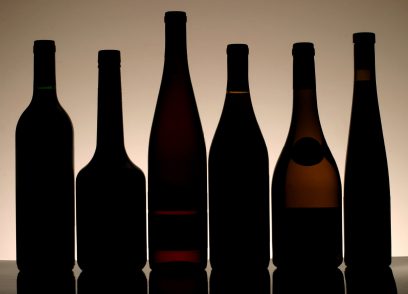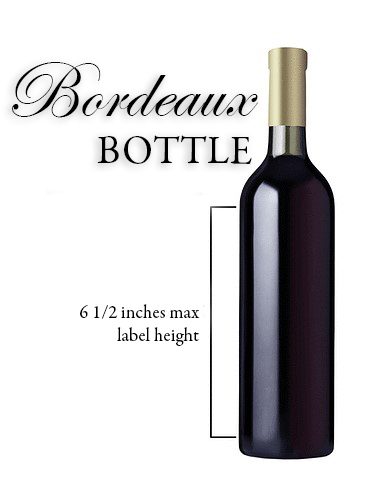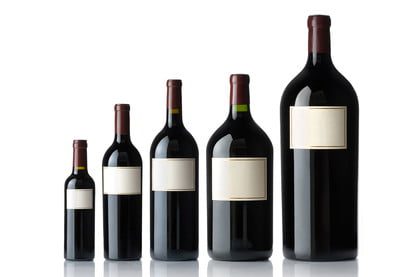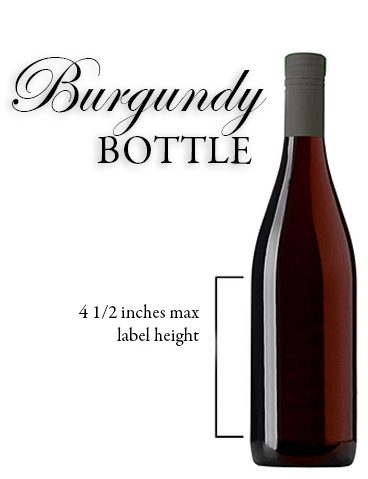How Big is a Wine Bottle? One Size Doesn’t Fit All
As a wine cellar designer and wine cabinet manufacturer, we design our wine racks and wine cabinets to fit all sizes of wine bottles, from magnums to splits. All of the racks we build accommodate the full height of a standard wine bottle, because we don’t want them sticking their necks out. But not all wine racking is the same, and one of the most common questions we get from people who are looking at wine racks is this: How big is a wine bottle?


Dimensions of a Wine Bottle
A standard wine bottle holds 750 milliliters of wine and stands approximately 11.5 inches tall. At the base, its diameter is 27/8 to 3 inches. Its sides are straight and it has a rounded, abrupt shoulder near the top, at about three-quarters of the height. This is often called a Bordeaux bottle because it is the usual size and shape for a bottle of red wine from that region of France.


The contents equal approximately 25 ounces, so if you are pouring five-ounce servings, you can get about five glasses of wine from one bottle. The size of one serving is arbitrary, of course, but according to The American Medical Association, “…A standard drink is any drink that contains about half an ounce (13.7 grams or 1.2 tablespoons) of pure alcohol. Generally, this amount of pure alcohol is found in five ounces of wine.”
Other Wine Bottle Sizes
Splits and Halves: Some bottlers and vineyards offer smaller sizes equivalent to half of a bottle or even a quarter of a bottle. A “split” is a quarter of a standard bottle, holding about six ounces of wine. Splits are 7 inches tall and 2 inches in diameter. A half, as you might guess, is half the volume of a standard bottle, holding 13 ounces of wine. It stands 9½ inches tall with a diameter at the base of 2¼”.
Magnum: A magnum of wine is equivalent to two bottles, or about 50 ounces. Standing 13½ inches tall, this bottle requires a special rack in your wine cellar. The base of the magnum is 4 inches in diameter.
Jeroboam: If you are feeling really thirsty or entertain lots of friends, a jeroboam is the big brother of the magnum. A jeroboam bottle holds three liters of wine, equal to four standard bottles, or 20 glasses.


For more information on wine bottle sizes, see our handy chart showing the different sizes of bottles and the types of racking we recommend for each:
Wine Bottle Shapes
It has been suggested that the abrupt “shoulder” of the Bordeaux bottle helps catch sediment on aged wines. Although this may be true, the shapes of wine bottles has more to do with their region of origin than with a functional characteristic. Different wine growing regions gradually developed their own bottle shapes, and there is no requirement for a certain type of wine to occupy a certain shape of bottle. To avoid consumer confusion, most bottlers stick to the conventions.
Besides the Bordeaux bottle, one other shape commonly used for red wine is the Burgundy bottle. It has more sloping shoulders and a slightly wider base. It is also 11½ inches tall, but has a diameter of 3½ inches at the base. Since Chardonnay is also made in Burgundy, you will find this varietal in a Burgundy-shaped bottle. The same is true for Pinot Noir.


A taller, more slender bottle is used by German wine makers. These long-necked bottles might hold the sweet dessert wines of that region, including Riesling and gewürztraminer. The fourth type of bottle is used in the Champagne region and is a heavier, wider-based bottle which has to be able to stand the pressure of the bubbles within.
Bonus Question: What’s a Punt?
There is an indentation in the bottom of some wine and champagne bottles, and it’s not designed to fool the consumer about the amount of liquid in the bottle. This hollow area is called the punt, and there are several theories about why it is there. Some say it helped in the shipping of bottles in crates because they could be lined up with the top of one bottle nestled in the punt of another. A more likely theory is that when bottles were blown by hand, imperfections in the bottom could cause a bottle to be unsteady. To minimize the chances of a rocky bottle, the glass maker would indent the bottom. The word probably comes from punty or pontil, a glassblowing tool.


